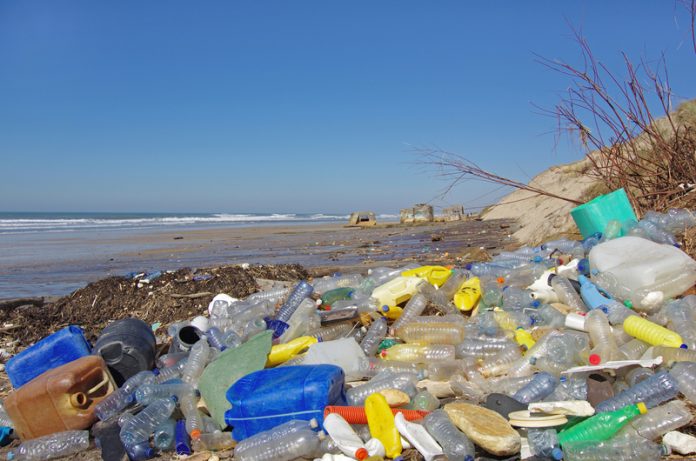Vice President, European Commissioner for Jobs, Growth, Investment and Competitiveness, Jyrki Katainen hails the success of the European Strategy for Plastics thanks to the transparency and full involvement of all stakeholders
The European Strategy for Plastics aims at making the European Plastics industry the smartest, most innovative, and most sustainable in the world. The Strategy aims to create a new plastic economy. It is set to deliver a key contribution to the transition towards a circular economy and to the modernisation of our industry. It addresses the whole value-chain, creates synergies between economic and environmental goals and aims to bring everyone onboard.
The success of the Strategy adopted in January 2018 is profoundly related to its wide acceptance and endorsement by all stakeholders, from NGOs to actors from the plastics value chain. Before proposing a vision for the future of the plastics sector, the European Commission organised multiple meetings, workshops and seminars. Stakeholders presented their concerns and proposed solutions to make this sector more circular and more sustainable.
Curbing marine litter is one of the key pillars and drivers of the strategy. There is wide consensus that the EU needs to tackle the menace that is choking our oceans and poses a risk to human health. Marine litter is not only an environmental and health issue – acknowledged by European citizens, due to its very visible negative impacts. It is also an economic issue. The economic activities directly affected by marine plastic debris and microplastics include shipping, fishing, aquaculture, tourism, recreation and oil and gas offshore platforms. For the EU, the costs to the tourism and recreation sector (extrapolated from beach-cleaning costs) were estimated at up to €630 million per year. The costs to the fishing industry are up to €57 million. Economic damage from litter on marine industry users was estimated to be $1.26 billion per annum to marine industries in the Asia Pacific region. UN Environment estimates the damage to marine environments globally to be at least $8 billion per annum.
Fighting marine litter also creates economic opportunities. Innovation in product design to avoid plastic litter and microplastics, investment in marine litter prevention, such as waste and wastewater treatment or port reception facilities, enhance industry competitiveness and can create jobs requiring technical and scientific skills.
Single-use plastics were identified as a major source of litter associated with the ‘on-the-go culture’ that promotes disposal instead of more sustainable options such as prevention and reuse. The Commission swiftly presented a legislative proposal in May 2018 to address single-use plastic products and the European co-legislators, the European Parliament and the Council, succeeded in reaching an agreement in December 2018. The outcome is ambitious and addresses the major concerns of European citizens.
The proposed Directive on Single-Use Plastics and Fishing gear is based on facts. Our legislation on the protection of the marine and coastal environment requires that quantities, composition and impacts of litter and microlitter should be monitored and assessed. These activities provided the evidence basis for our Directive on Single Use Plastics by identifying the most littered items on the EU coastline.
That is why the Plastics Strategy and the Directive on Single-Use Plastics are among the most popular actions taken by the Commission.
Voluntary industry initiatives
As part of its strategy on plastics, the Commission launched a voluntary pledging campaign. A preliminary analysis indicates that at least 10 million tonnes of recycled plastics could be supplied by 2025 if the pledges are fully delivered. However, based on the pledges from the demand side, only 6.5 million tonnes would be expected, demonstrating that more action will be needed to achieve the objective of a well-functioning EU market of recycled plastics.
To accelerate Europe’s transition towards a circular plastics economy, the Commission launched the Circular Plastics Alliance, whose aim is to improve the economics and quality of plastics recycling in Europe. The Alliance will, in particular, provide opportunities to strengthen the match between supply and demand for recycled plastics, which is identified as a key obstacle to a well-functioning EU market of recycled plastics. It wants to contribute to the objective of achieving at least 10 million tonnes of recycled plastics finding their way into new products on the EU market by 2025 as set in the European Strategy for Plastics.
The Circular Plastics Alliance is an Alliance for the industry and by the industry. It brings together industry representatives from all stages of the plastic lifecycle, from production to recycling. The Alliance will strengthen the EU’s industrial capability to transform the plastics economy, transitioning from a linear to a circular economy model. In practice, this cooperation of actors within the plastics value chain means, for example, that a recycler will need to maximise the quality and purity of recycled polymers as much as possible, in order to satisfy the demand for a recycled, high-quality and affordable raw material. On the demand side, product designers will have to take into account sorting and recyclability as key features for their products, in order to enable waste managers and recyclers to maximise the quantity and the quality of their output, and so on.
We are also interested in voluntary actions aimed at reducing marine litter, one of the examples can be the Operation Clean Sweep. This initiative could be a good start for a credible programme leading to less plastic pellet leakages throughout the supply chain. We believe that it could be complemented by credible and transparent monitoring demonstrating quantitative reduction of pellets emissions. One of the preferred options reflected in our Strategy is to strengthen this initiative through an obligatory certification scheme throughout the plastic supply chain, which could be a blueprint for a sustainable solution globally.
Plastic is a key material for low carbon and circular economy. However, it needs to be properly managed at every stage of the value chain. Only by bringing the value chain together will we create a win-win situation for environmental protection and industrial competitiveness.
Microplastics
The Plastics Strategy outlines a comprehensive approach addressing not only macroplastics such as single-use products, but also all microplastics: intentionally added microplastics in products, and microplastics that are generated unintentionally during the life cycle of products. Our European Chemicals Agency (ECHA) located in Helsinki has recently assessed the health and environmental risks posed by intentionally added microplastics and has concluded that an EU-wide restriction would be justified. If adopted, the restriction could result in a reduction in emissions of microplastics of about 400 thousand tonnes over 20 years. The persistence and the potential for adverse effects or bioaccumulation of microplastics is a cause for concern. Once released, they persist in the environment for thousands of years and are practically impossible to remove. Currently, it is not possible to determine the impact of such long-term exposure on the environment.
Global action
We are very keen on discussing plastics with our global partners. In all the meetings I hold with third countries on this topic, the EU is praised for its Plastics Strategy and the Directive on Single Use Plastics, which are considered as useful policy examples by other countries to tackle plastic pollution. We are very happy to share our practices and engage in looking for sound solutions (for example: commonly agreed standards). One of the practical examples of this engagement can be High-Level Economic Dialogues we have with China, Japan or Turkey, where the issue of the circular economy – in plastics in particular – features prominently.
Plastic pollution is a global problem, which can only be tackled through joint international action. The EU Strategy for Plastics with its flagship initiatives against single-use plastics, microplastics from all sources and its strong international dimension puts Europe de facto at the forefront of the international scene to promote the UN Environmental Assembly’s objective of long-term elimination of the discharge of litter and microplastics.
We find it important to build on existing activities and frameworks at the local, national, regional and global level, in particular, the Action Plans under Regional Seas Conventions, the Basel Convention, UN agencies, the G7 and G20, and to ensure that they fully contribute to tackling marine litter within their respective mandates.

Jobs, Growth, Investment and Competitiveness
Jyrki Katainen
Vice President, European Commissioner for Jobs,
Growth, Investment and Competitiveness
European Commission
jyrki-katainen-contact@ec.europa.eu
https://ec.europa.eu/commission/commissioners/2014-2019/katainen_en











